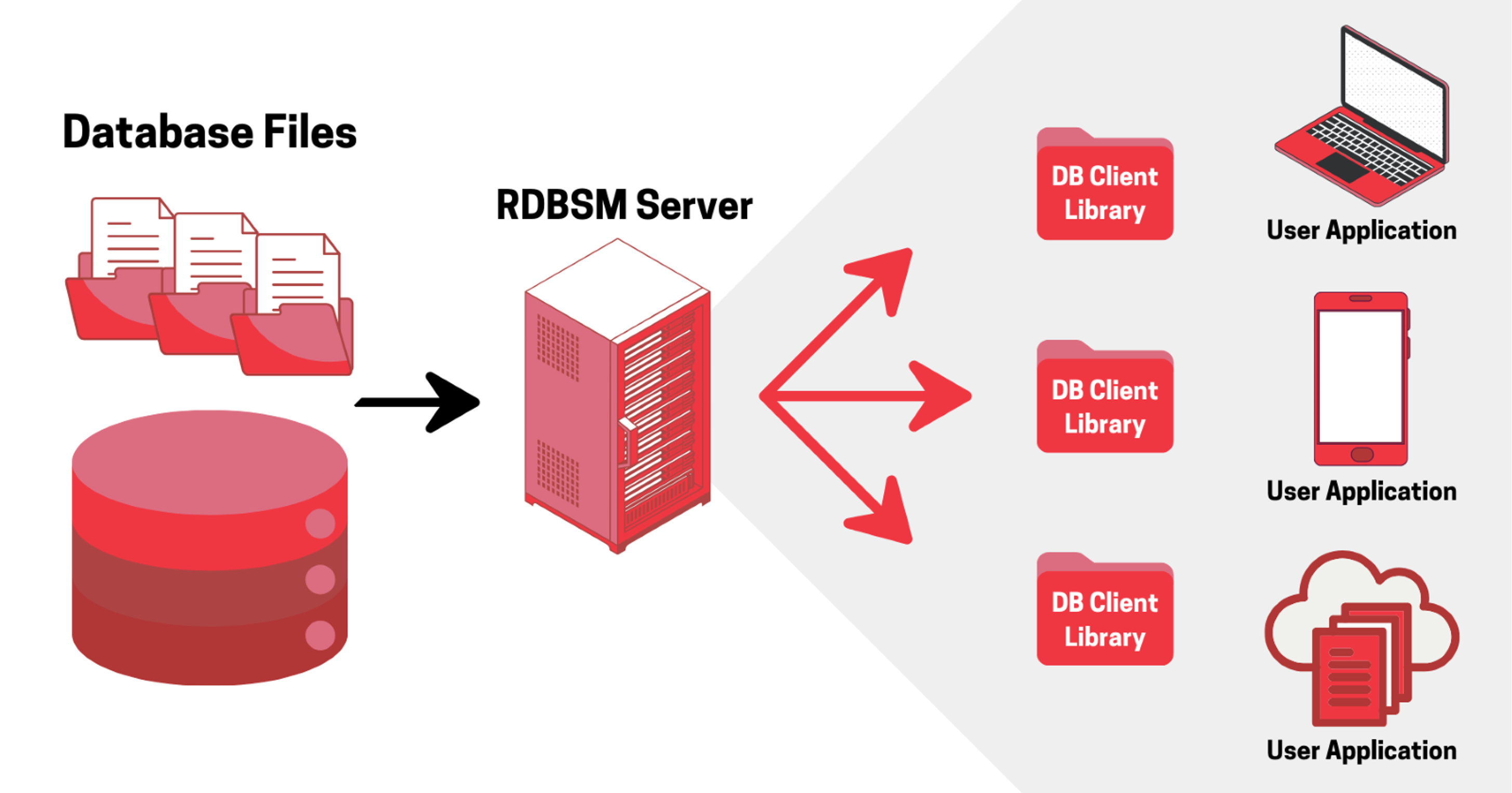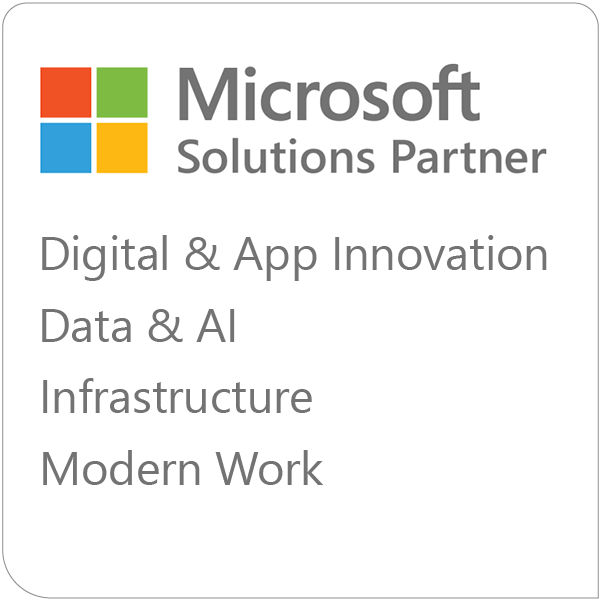In This Blog:
- What Is an RDBMS?
- RDBMS Features
- ACID Properties
- Data Integrity
- Leading Relational Database Management Systems
- RDBMS Comparison Table
- Conclusion
- FAQ
Most businesses today rely heavily on some form of relational database management system (RDBMS) for their daily operations. They need it to store, organize, serve and manage data in a secure and efficient fashion.
However, with so many options to choose from, deciding on the best RDBMS for each use case is not easy. You need to consider your business size, the infrastructure and operating system your technology runs on, the features you will need, and of course, your budget.
In this article, you will learn what an RDBMS is and how you can use it to benefit your company. We will also cover the best RDBMS solutions and compare them side by side. In turn, you will have a clear picture of which solution is right for your needs.

What Is an RDBMS?
Relational database management systems use rows and columns to store data in a structured format called a table. Tables make it easier to access and manage large amounts of data.
The term relational refers to its ability to create relationships between different tables. In turn, this makes it possible to create complex queries and return data from multiple tables using a single command.
All RDBMSs use the Structured Query Language (SQL) to query and manage data. RDBMSs are built on the principles of Structured Query Language (SQL), though each system implements its own SQL dialect with varying syntax and features. While there is significant overlap in core SQL concepts, databases like MySQL, PostgreSQL, and SQL Server each have their own specific syntax constraints and extensions. This means that while developers can work across different RDBMS solutions, they need to adapt their queries to each system's specific requirements.
Learn more about our database and analytics services.
RDBMS Features
Relational database management systems provide tools and capabilities for managing data, including mechanisms for data integrity checks, transaction management, concurrency control, and more.
While these features help maintain data quality, proper database administration and monitoring remain essential for ensuring data integrity and preventing corruption.
Read on to learn about some important features to know about.
ACID Properties
The term ACID stands for Atomicity, Consistency, Isolation, and Durability. These properties ensure reliable database transactions by guaranteeing that each transaction is processed completely or not at all, maintains database consistency, operates independently of other transactions, and persists once committed. While ACID properties protect data integrity during transactions, separate monitoring and maintenance are needed to ensure long-term data integrity of stored data
Data Integrity
RDBMSs provide mechanisms and features designed to help maintain data accuracy and consistency throughout its lifecycle. However, while these systems include various safeguards, they cannot completely prevent all forms of data corruption. External factors like power outages during transactions, hardware failures, or other system issues can still potentially compromise data integrity. This is why proper database administration, regular backups, and monitoring practices are crucial for maintaining reliable and trustworthy data.
SQL
Structured Query Language (SQL) provides the foundation for querying and managing relational databases. While the basic CRUD operations (Create, Read, Update, Delete) share common principles across different systems, each RDBMS implements its own SQL dialect with unique syntax features and extensions. For example, MySQL, PostgreSQL, and SQL Server each have their own specific SQL variations, though they share core concepts that allow developers to work across different systems with some adaptation.
You may also like: 5 Things to Look for in a SQL Server Managed Services Provider
Transaction Management
Transaction management makes it possible to ensure all database operations within a transaction are successful before data is updated. In turn, database integrity is maintained even when errors or failures occur.
Concurrency Control
This feature enables simultaneous database operations to take place without conflict. Multiple users can access the database without affecting data consistency.
Indexes
Indexes play an essential role in fast data retrieval. They create fast lookup paths for any type of database query thereby increasing the performance of large databases.
Data Security
RDBMSs support a variety of security measures, including encryption, authentication, and access control. These measures help protect your database from unauthorized access, breaches, and other threats.
Leading Relational Database Management Systems
When starting your search for the best RDBMS solution, it’s good to first consider the largest ones by market share. As they say, the truth is in the numbers.
The systems we will cover aren’t just used by the biggest tech brands but have also existed for several decades. If nothing else, this certainly proves they’ve stood the test of time.
MySQL
MySQL is an open-source RDBMS created in 1995 by MySQL AB and currently owned by Oracle Corporation. It’s one of the most used database solutions and is well known for its simplicity and stability.
The most common use cases for MySQL include web apps, e-commerce websites, and content management systems such as WordPress.
Some major companies that use MySQL are Facebook, YouTube, and Netflix.
PostgreSQL
First released in 1986 under the name Postgres, this RDBMS was created as an advanced version of the Ingred database. PostgreSQL is open-source and famous for its extensibility and compliance with standards.
Use cases for PostgreSQL include geospatial databases, complex queries, data warehousing, business intelligence, web apps, and mobile apps.
Apple, Cisco, and Spotify are some of the biggest names that rely on this RDBMS.
Microsoft SQL Server
Microsoft SQL Server is an RDBMS owned by Microsoft Corporation. It was initially named SQL Server and developed in 1989 by a group effort of three companies: Sybase, Ashton-Tate, and Microsoft.
Some well-known use cases for Microsoft SQL Server include enterprise applications, business intelligence, data warehousing, and online transaction processing. It’s also the obvious choice for Microsoft’s native Azure infrastructure.
Famous brands that employ this solution include Microsoft, Dell, Stack Overflow, and Accenture.
Oracle Database
Another leader in RDBMS solutions is Oracle Corporation, whose Oracle Database RDBMS was first released as early as 1979. It was one of the first databases to use SQL and is well respected for its scalability, robustness, and wide array of features.
This RDBMS is best when used for data warehousing, large enterprises, online transaction processing, and high-volume data environments.
Oracle Database is a vital piece of infrastructure for JPMorgan Chase, AT&T, LinkedIn, and eBay.
RDBMS Comparison Table
Now that you know more about the largest relational database management systems, it’s time to decide which one is best for you. The following table will give you a side-by-side overview of each system so that you can make a well-informed decision.
| FEATURE | MySQL | PostgreSQL | Microsoft SQL Server | Oracle Database |
|---|---|---|---|---|
|
Operating Systems |
Windows, Linux, macOS |
Windows, Linux, macOS |
Windows, Linux |
Windows, Linux, Solaris, AIX |
|
Storage Engines |
Multiple: InnoDB, MyISAM |
Single (native) |
Single (native) |
Single (native) |
|
Window Functions |
Limited | Comprehensive | Comprehensive | Comprehensive |
|
Row-Level Security |
No |
Yes |
Yes |
Yes |
|
Authentication |
Native, PAM, LDAP, GSSAPI | Native, PAM, LDAP, GSSAPI | Native, Windows Auth | Native, LDAP, Kerberos |
|
Scalability |
Vertical, Limited Horizontal | Vertical and Horizontal | Vertical and Horizontal | Vertical and Horizontal |
|
Clustering |
MySQL Cluster | Native Clustering | Always On Availability Groups | Oracle RAC |
|
Replication |
Master-Slave, Group Replication | Master-Slave, Logical, Physical | Transactional Replication | Data Guard |
|
Community Support |
Large | Large | Moderate | Moderate |
|
Commercial Support |
Oracle Support | Various Vendors | Microsoft Support | Oracle Support |
|
Cost |
Free | Free | Commercial License | Commercial License |
Conclusion
Choosing the right relational database management system for your business depends on various factors such as your business size, infrastructure, required features, and budget.
The most popular options include MySQL, PostgreSQL, Microsoft SQL Server, and Oracle Database. MySQL is known for simplicity and performance, PostgreSQL for extensibility and standards compliance, Microsoft SQL Server for enterprise integration, and Oracle Database for scalability and robustness.
After reading this article and comparing their features, you are fully equipped to select the best RDBMS for your specific needs.
FAQ
Finally, here are some commonly asked questions about this topic for your convenience.
What is an example of a RDBMS?
A well-known example of a relational database management system (RDBMS) is MySQL. One common real-world application of MySQL is managing the database for WordPress websites, where all site content, including posts, comments, and user data, is stored in structured tables. MySQL ensures efficient data retrieval, organization, and relationships between different pieces of information within the website.
Are SQL and DBMS the same?
No, SQL (Structured Query Language) and a DBMS (Database Management System) are not the same. SQL is a programming language specifically designed for managing and querying data within a database, while a DBMS is the software that facilitates the creation, storage, and management of databases. Essentially, SQL is used to communicate with a DBMS to perform operations like retrieving, updating, and deleting data.
Is MongoDB a RDBMS?
No, MongoDB is not a relational database management system (RDBMS); it is a NoSQL database. Unlike relational databases that use structured tables and predefined schemas, MongoDB stores data in a flexible, document-oriented format using JSON-like structures. This makes it ideal for applications requiring scalability and handling unstructured or semi-structured data.
Which SQL is most popular?
MySQL is one of the most popular SQL-based databases due to its reliability, open-source nature, and widespread use in web applications. It is commonly used by businesses, developers, and platforms such as WordPress and Facebook for managing structured data efficiently. Other widely used SQL databases include PostgreSQL, Microsoft SQL Server, and Oracle Database.
Is Excel a database?
No, Excel is not a database; it is primarily a spreadsheet application designed for data analysis, calculations, and visualization. While Excel can store and organize data in tabular form, it lacks advanced database functionalities like enforcing relationships, handling concurrent users efficiently, and processing large datasets. For complex data management, relational databases like MySQL or PostgreSQL are more suitable.
What are the 4 RDBMSs?
The four most widely used relational database management systems (RDBMSs) are Oracle Database, MySQL, Microsoft SQL Server, and PostgreSQL. These databases are used in a variety of applications, from enterprise-level data management to web development, and they provide robust features for handling structured data efficiently. Each has its strengths, with Oracle being widely used in large enterprises, MySQL in web applications, SQL Server in Microsoft environments, and PostgreSQL known for its advanced open-source capabilities.
What are the 4 types of DBMSs?
The four main types of database management systems (DBMSs) are Hierarchical DBMS, Network DBMS, Relational DBMS, and Object-Oriented DBMS. Hierarchical DBMS organizes data in a tree-like structure, Network DBMS allows complex relationships using a graph-like model, Relational DBMS (RDBMS) stores data in tables with relationships, and Object-Oriented DBMS integrates database capabilities with object-oriented programming principles. Each type is suited for different use cases depending on data structure and application needs.






